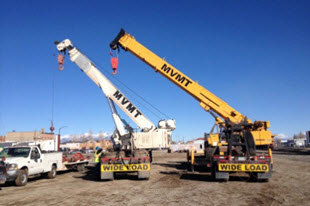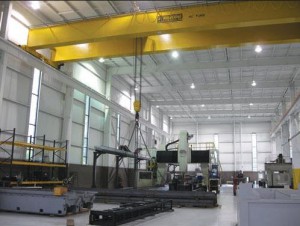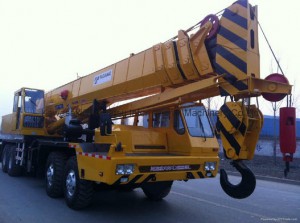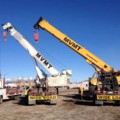 Lifting heavy objects is a fundamental part of human life. Some humans can lift more than others while a few train to lift incredible loads. Eventually, the weight that needs lifting – or the demands of doing so repetitively – exceeds the abilities of one man (or even a group of men).
Lifting heavy objects is a fundamental part of human life. Some humans can lift more than others while a few train to lift incredible loads. Eventually, the weight that needs lifting – or the demands of doing so repetitively – exceeds the abilities of one man (or even a group of men).
That’s where mechanical advantage comes into play; more specifically, the machine.
Machines can be as simple as a long stick (lever) and a rock (fulcrum) or as complicated as a modern-day airplane. But, for lifting heavy loads, nothing beats to power of a crane.
Cranes for industrial and public use come in basically two forms: installed and mobile. Installed cranes (sometimes called bridge cranes) are ideal for interior commercial applications.
We’ll discuss them in a future article. This article is going to focus on the mobile crane.
We’re all familiar with the basic construction crane – a truck or track-mounted boom with a retractable cable and pulley – and even at a young age, most kids can identify one on sight.
 These cranes are ideal for unloading and loading, construction, and generally moving heavy things around. They have the added benefit of being able to move from place to place – whether on their own or via trailer – without (much) assembly and dis-assembly.
These cranes are ideal for unloading and loading, construction, and generally moving heavy things around. They have the added benefit of being able to move from place to place – whether on their own or via trailer – without (much) assembly and dis-assembly.
If your needs gravitate towards these unique tools and you’re in the market for a mobile crane, you might consider purchasing a used crane over a new one. Websites such as MachineSales.com are great resources for used cranes for sale.
When shopping for a used crane, there are some factors to keep in mind:
1) How much weight do you need to be able to lift on a regular basis?
This is a pretty obvious consideration and doesn’t need much explanation.
2) To what height do you need to lift the weight?
If you’re just moving weight from a truck bed to ground level or vice versa, you could get away with a simple truck-mounted crane. If your needs call for lifting weights to multiple stories or more, you might need a crane with a large boom.
3) Where do you need this crane to go?
If you’ll do most of your work on relatively hard surfaces, the aforementioned truck-mounted crane would suffice. However, if you’re venturing onto softer surfaces – such as those often found at construction sites – a track-mounted crane that can traverse variable surfaces would be more useful.
 4) How does is this crane transported?
4) How does is this crane transported?
Truck-mounted cranes can easily be transported from site to site at highway speeds while larger, track-mounted cranes – which have only one or two forward gears – require a separate truck and trailer for transporting in a reasonable amount of time.
5) Is special training required to operate the type of crane you need?
Some cranes require little to no training while others demand extensive training.
A crane can be a valuable addition to any equipment lineup and leave you wondering why you didn’t get one sooner. If you have questions about which type of crane might be right for you, feel free to contact MachineSales.com and we’ll be happy to help.
If you’d like to see what’s available in used cranes for sale, navigate to our home page and search for cranes.
